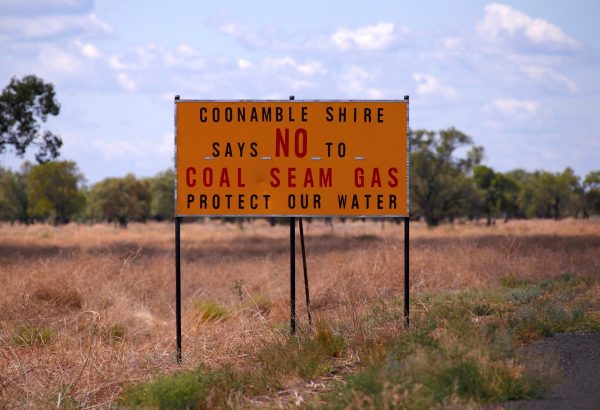This issue applies to Australian east coast gas production, not Australia’s main exports from its long-established north-west region. The east coast gas market has been isolated from international markets until recently — keeping wholesale gas prices low and attracting gas intensive industries.
In recent years, technology development has led to optimism about the potential to increase east Australian gas production, particularly through the exploitation of large coal seam gas (CSG) resources identified in Queensland and parts of New South Wales in north-eastern Australia. Based on resource assessments, three new LNG production plants have been constructed in Queensland to export gas and more are planned.
However, the developers of these plants have faced a ‘perfect storm’.
Construction and labour costs blew out because they were built during Australia’s largest ever mining boom. Long term export contracts were written with links to international oil prices. But these prices have halved over the past few years while production from CSG has fallen short of expectations.
Queensland LNG exporters have responded by buying up and diverting gas originally intended for local consumption to meet their contractual obligations. This has created gas shortages and consequent price spikes within the east Australian gas market — a change from the previously low prices.
Further, gas-fired power generation plays a pivotal role in Australian electricity generation at a time when several old coal-fired power stations have closed and a conservative government stifled investment into large renewable electricity projects for several years.
The combination of these factors has impacted electricity supply and prices within the National Electricity Market, which covers Australia’s southern and eastern states. Public attention has been focused on gas and electricity because of several high-profile blackouts, including one affecting the whole state of South Australia, which is heavily reliant on gas-fired power generation.
Farmers have also become concerned about the potential long-term impacts of CSG production on underground aquifers and the Great Artesian Basin water resource, which many depend on for their farming activities. Some have reacted to what they see as ‘cowboy’ behaviour from some gas developers. Others feel they have not been adequately compensated for the disruption to their farming activities. Many are concerned about the health and amenity impacts on their families from the development and production activities.
Environmental groups and some policy analysts have also expressed concern about the poor monitoring of methane leakage, with indications that it is much higher than was predicted. Methane is a very active greenhouse gas, and high emissions undermine claims that gas has lower climate impact than coal. In turn, this undermines the argument that gas provides a transition path from coal to a low carbon economy. Local environmental impacts, including land clearing, air pollution and the release of potentially toxic pollutants have added to the concerns, and health advocates have joined the debate.
Major industry groups have been alarmed by the impacts of LNG production on their members’ gas and electricity costs as well as their inability to negotiate long term contracts to underpin their business planning. They have called for government action to limit local gas prices and ensure adequate availability.
Traditionally conservative farmers, environmental and health advocates and major industry groups have formed a loose and unlikely coalition. It opposes CSG development and demands lower gas prices and guaranteed access to supply. Some state governments have responded by banning CSG development and increasing the stringency of monitoring and control of existing projects.
Federal Australian governments and their policymakers have for decades strongly supported opening up the Australian economy to international markets. Prices of locally produced oil were set to world parity in the mid-1970s, while tariffs and other trade barriers on imported goods have been progressively reduced. So both government and opposition have opposed allocating part of our gas supply exclusively to local use.
Yet the federal government has recognised that the present situation is politically untenable: it does not pass the ‘pub test’. That is, it does not make sense to an average Australian that Australia should be a major gas exporter while its local consumers face shortages and pay higher prices than export customers.
So a ‘swap’ mechanism has been proposed. While the details are still unclear, the basic approach seems to be broadly accepted. If local east coast gas prices exceed a trigger price such as the ‘netback’ gas price (the international price minus production and transport costs), gas exporters will be expected to divert supply to the local Australian market. They can then top-up supply for their export markets by buying gas on the international market or negotiating arrangements with other suppliers, such as Australian west coast LNG plants.
Many Australians are watching with interest to see how this will play out.
Alan Pears is Senior Industry Fellow in the School of Global, Urban and Social Studies at RMIT University (formerly the Royal Melbourne Institute of Technology).


Industry underestimates of methane leaks are a significant concern here in the USA as well. Nat gas is not such a ready made, wonderful bridge to renewables as many would like people to believe.
That coalition in Australia is interesting, indeed. I hope follow up reports will be posted so we can see how much impact they might have.
In response to Richard Solomon, I agree that the industry and the Australian government have not grasped the significance of methane leakage. Some academic reports have identified significant concerns with lack of monitoring and management. Further, because of the increasing urgency of response to climate change, there is a case for even stronger action on highly active, shorter lived gases such as methane, as cutting these has a bigger impact on short-term warming, which improves the chances of limiting the scale of climate change – if we act strongly on all gases.